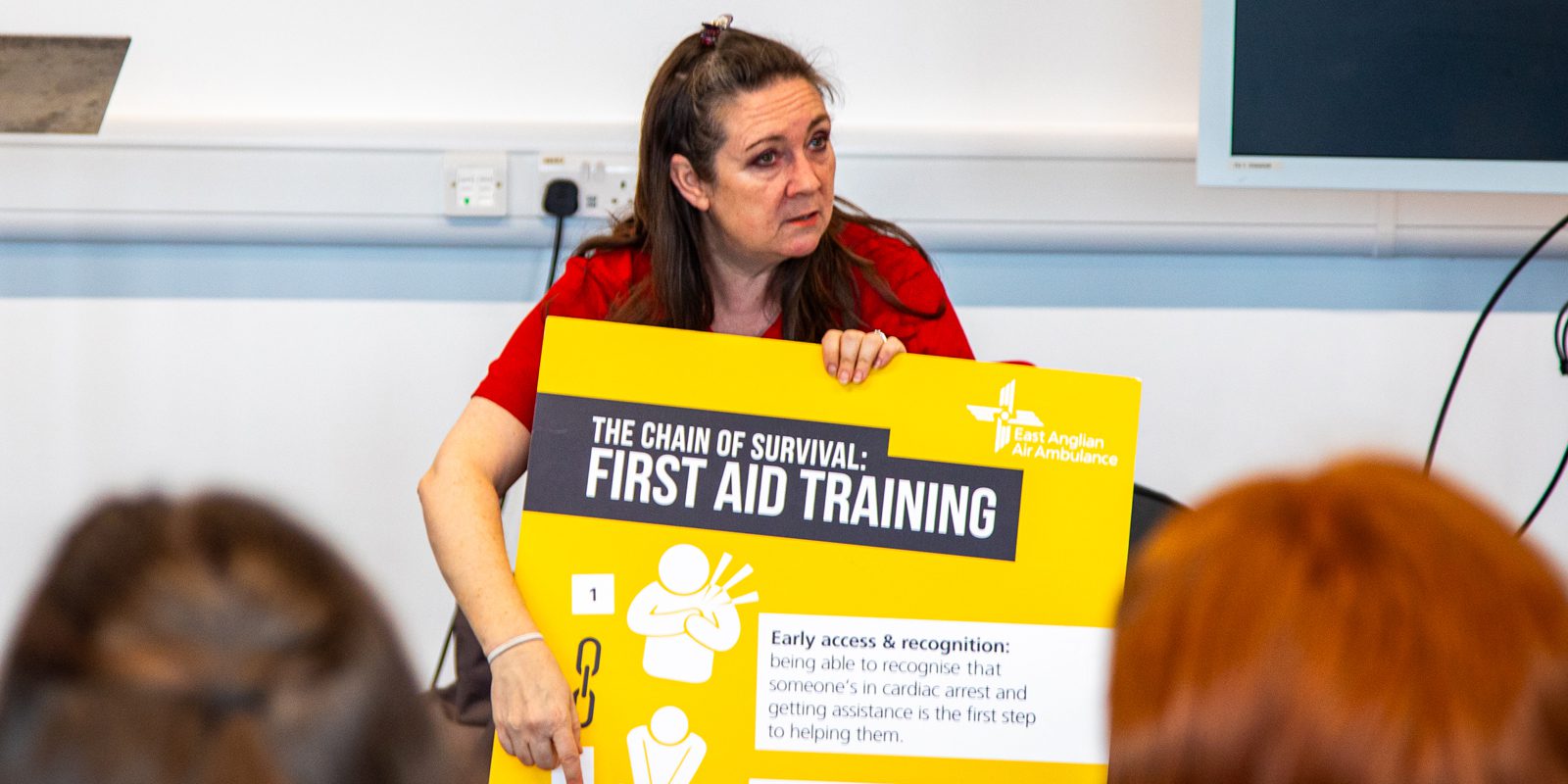3 Oct 2025
Behind the scenes of a CPR training session
We aim to educate and raise awareness of life-saving defibrillator and CPR skills in the community to improve patient outcomes in the event of a cardiac arrest. A cardiac arrest is a life-threatening emergency where the heart stops beating properly and stops pumping blood around the body, preventing it getting to vital organs, particularly the brain.
Around one in four of the emergencies to which EAAA is tasked are cardiac arrests.
CPR works by circulating oxygenated blood around the body and to the brain via chest compressions. Essentially, CPR keeps the person alive whilst waiting for the emergency services to arrive. CPR doesn’t restart a heart, rather it helps to maintain blood flow to the brain.
The out-of-hospital cardiac arrest survival rate in the UK is only around 8%; however, if a defibrillator is used alongside effective CPR within the first 3-5 minutes, the chances of survival can increase to between 40% – 70%.
Sometimes bystander CPR is performed on strangers, but in many cases, it is performed on loved ones.
Our Community CPR programme was introduced in 2018 to, not only equip people with the skills and knowledge to help save a life, but to instil confidence.
The facts
When somebody suffers a cardiac arrest, the first three to four minutes are key. Survival rates decrease during this crucial time. Emergency services, including EAAA, are unlikely to be there within that time but, crucially, bystanders are probably already there.
Early bystander CPR can increase the chances of somebody surviving a cardiac arrest. Survival rates with early use of CPR and defibrillation can be as high as 70%. This is why EAAA is committed to training as many people as possible with life-saving skills.
An EAAA CPR training session
EAAA CPR and AED training sessions last one hour and are delivered by our staff CPR trainers or CPR volunteers to a minimum of eight people. The trainers can teach anyone from school children to students to adults of any age. Thanks to the support of volunteers, sessions can be arranged for evenings and weekends.
We can use a variety of venues including village halls, classrooms, church halls and workplaces.
Simone Black, EAAA CPR Trainer, says, “We have trained in some really interesting locations including on farms, and even a lounge overlooking the football pitch at Norwich City’s Carrow Road. What we look for in a training venue is if there is enough space so people can see what we’re doing, and have enough room to take part in the practical elements – other than that we’re flexible!”
In the sessions, our trainer will talk through what happens when somebody suffers a cardiac arrest and how this differs from a heart attack. We discuss the Chain or Survival, how we use the acronym DRSACB as a reminder of the key steps to take if you find yourself as a bystander. The trainer will demonstrate effective chest compressions and use of a defibrillator, plus there is the opportunity to be hands-on with CPR mannequins and defibrillators to put into practise the skills learned.
A chance to ask questions
The training sessions and friendly and informal to ensure everyone gets the best learning experience and can ask questions.
Josh Lawrence, EAAA Community CPR Training Manager, says, “We cover plenty of the commonly asked questions, including CPR on children, removing bras to ensure effective placement of defibrillator pads, and anxiety about breaking ribs, but we make sure there are opportunities to ask other questions too.”
Leaving with confidence
Simone says, “At the end of the training, the majority of people feel more confident. We hope people never need to use the skills we have given them – but, if they do need to step in to help, then they will hopefully feel much more confident about the steps that should be taken because the training has taken away much of the unknown, fear or anxiety that people may have about CPR and defibrillators.”
Josh adds, “The best thing about training others is inspiring people to make a difference and giving them confidence. Around 80% of out-of-hospital cardiac arrests happen at home. We want people to know what to do in a terrible moment, have the confidence to act to survival rates, so ultimately more lives can be saved.”

Book a free CPR and defibrillator training session
EAAA’s CPR and defibrillator training sessions last one hour and are free of charge. To learn the skills to save a life, book online.